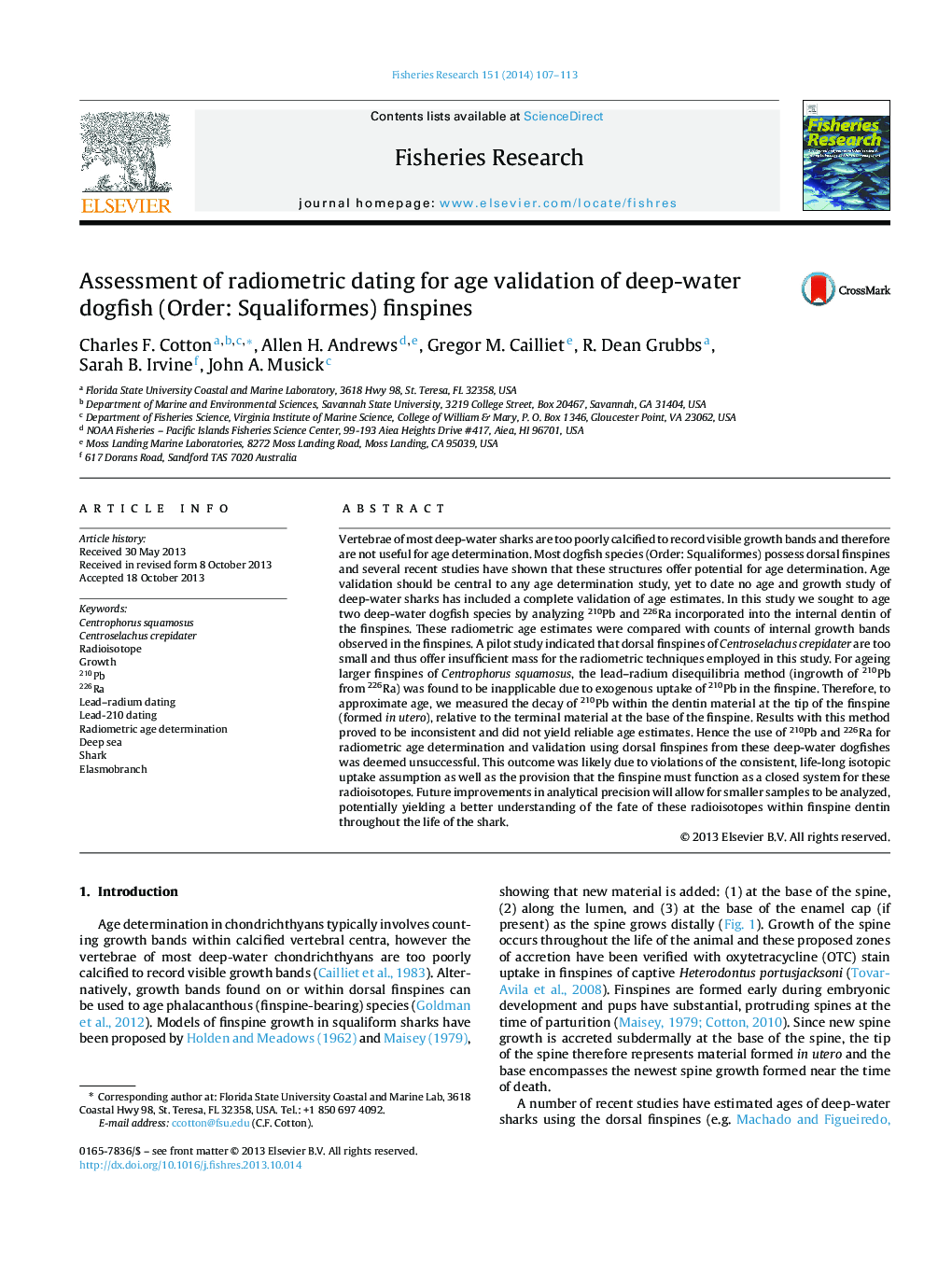| کد مقاله | کد نشریه | سال انتشار | مقاله انگلیسی | نسخه تمام متن |
|---|---|---|---|---|
| 6385954 | 1626817 | 2014 | 7 صفحه PDF | دانلود رایگان |
عنوان انگلیسی مقاله ISI
Assessment of radiometric dating for age validation of deep-water dogfish (Order: Squaliformes) finspines
دانلود مقاله + سفارش ترجمه
دانلود مقاله ISI انگلیسی
رایگان برای ایرانیان
کلمات کلیدی
موضوعات مرتبط
علوم زیستی و بیوفناوری
علوم کشاورزی و بیولوژیک
علوم آبزیان
پیش نمایش صفحه اول مقاله

چکیده انگلیسی
Vertebrae of most deep-water sharks are too poorly calcified to record visible growth bands and therefore are not useful for age determination. Most dogfish species (Order: Squaliformes) possess dorsal finspines and several recent studies have shown that these structures offer potential for age determination. Age validation should be central to any age determination study, yet to date no age and growth study of deep-water sharks has included a complete validation of age estimates. In this study we sought to age two deep-water dogfish species by analyzing 210Pb and 226Ra incorporated into the internal dentin of the finspines. These radiometric age estimates were compared with counts of internal growth bands observed in the finspines. A pilot study indicated that dorsal finspines of Centroselachus crepidater are too small and thus offer insufficient mass for the radiometric techniques employed in this study. For ageing larger finspines of Centrophorus squamosus, the lead-radium disequilibria method (ingrowth of 210Pb from 226Ra) was found to be inapplicable due to exogenous uptake of 210Pb in the finspine. Therefore, to approximate age, we measured the decay of 210Pb within the dentin material at the tip of the finspine (formed in utero), relative to the terminal material at the base of the finspine. Results with this method proved to be inconsistent and did not yield reliable age estimates. Hence the use of 210Pb and 226Ra for radiometric age determination and validation using dorsal finspines from these deep-water dogfishes was deemed unsuccessful. This outcome was likely due to violations of the consistent, life-long isotopic uptake assumption as well as the provision that the finspine must function as a closed system for these radioisotopes. Future improvements in analytical precision will allow for smaller samples to be analyzed, potentially yielding a better understanding of the fate of these radioisotopes within finspine dentin throughout the life of the shark.
ناشر
Database: Elsevier - ScienceDirect (ساینس دایرکت)
Journal: Fisheries Research - Volume 151, March 2014, Pages 107-113
Journal: Fisheries Research - Volume 151, March 2014, Pages 107-113
نویسندگان
Charles F. Cotton, Allen H. Andrews, Gregor M. Cailliet, R. Dean Grubbs, Sarah B. Irvine, John A. Musick,